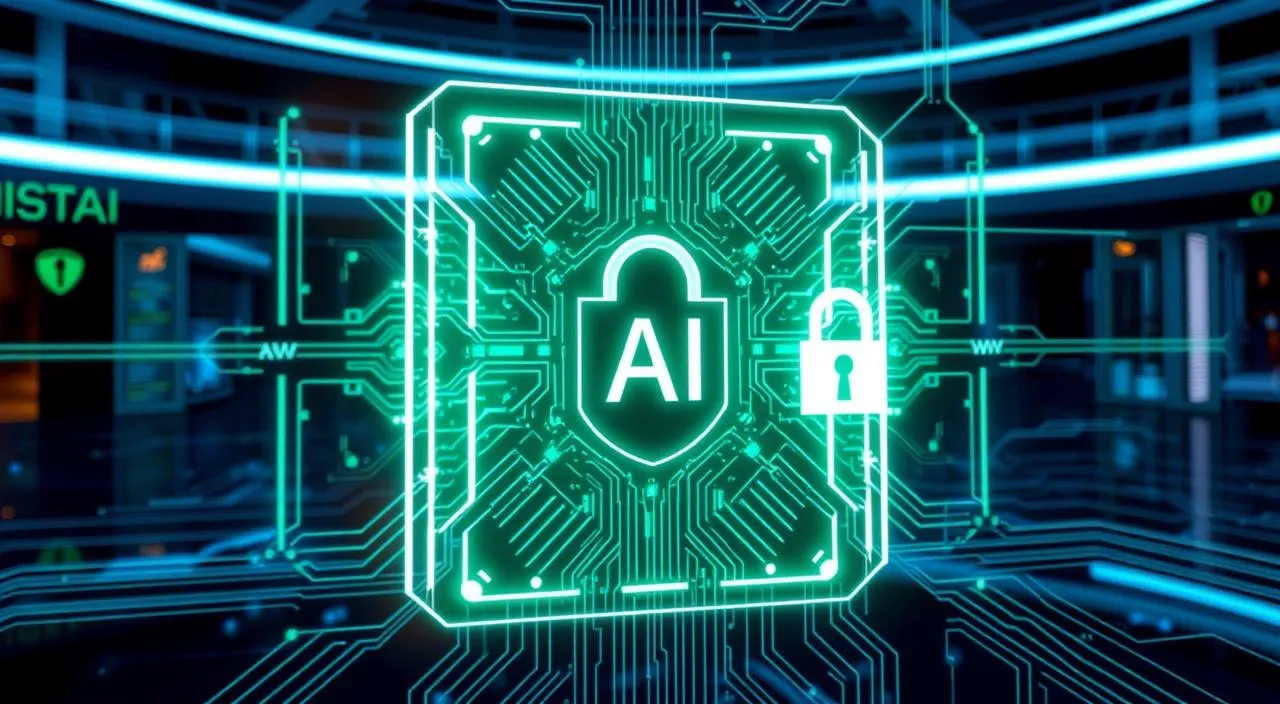Artificial intelligence has grown fast, making ai image generators very popular. It’s key to pick the right one for you. These tools can create amazing images, from real-looking photos to digital art. They’ve changed digital art, offering endless creative options.
It’s important to be clear with your prompts to get good images. Many tools struggle with vague requests.
For free or low-cost options, try Leonardo AI Image Generator or Canva. They’re fast and good at following prompts. Midjourney is great for those who want detailed images, starting at $10/month. OpenAI’s DALL-E 2 was a hit in 2022 but was replaced by DALL-E 3.
Key Takeaways
- AI image generators have become increasingly popular, and it’s essential to find the best one for your needs.
- Image generation ai has revolutionized the field of digital art, offering a wide range of creative possibilities.
- Prompt specificity is crucial in generating quality images.
- Free and freemium options are available for ai image generators.
- Midjourney and Leonardo AI are popular choices for ai image generation.
- OpenAI’s DALL-E 3 is a powerful ai image generator with a wide range of features.
Understanding AI Image Generators: The Basics
AI image generators use algorithms to make images by learning from big data sets. They can create high-quality pictures without needing a lot of design knowledge. Tools like machine learning image makers make art faster and easier.
Using AI images can boost marketing by 20-50% by matching what people like. These tools can turn text into images, making them easy for anyone to use. Midjourney and DALL-E are great at making detailed images from text.
To get how AI image generators work, you need to know about artificial intelligence and machine learning. AI image making has grown a lot in recent years. By 2023, about 25% of businesses in different fields are using AI images in their marketing and design.
Why AI Image Generators Are Revolutionizing Digital Art
AI image generators are changing digital art, making it easier for artists and designers to create amazing visuals. They can make high-quality images in just minutes. This boosts productivity and opens up new creative doors. Tom’s Guide says AI image generators could change digital art, bringing new ideas and making work faster.
These tools use neural networks to make many images from one idea. This lets users pick the best image for their vision. Also, the images can be very detailed, depending on the AI’s skill and training data.
Some key benefits of AI image generators include:
- They can make images automatically, saving money and time
- They work fast, letting users make visuals almost right away
- They make high-quality image making available to everyone, not just experts
As tech gets better, we can expect even more from AI image generators. We’ll see faster image making and better use in virtual and augmented reality. Better text-to-image conversion is also on the horizon, making images even more realistic.
Key Features to Look for in an AI Image Generator
When picking an automated image generator, look at image quality, how easy it is to use, and how you can customize it. A good tool should make high-quality images, at least 1080p. The tool’s interface and how easy it is to use are key to a good experience.
Being able to adjust settings is crucial for tailoring images to your needs. Look for tools that let you change styles and enhance images. Also, being able to save images in different formats, like PNG, is a big plus.
Some tools, like DALL-E, let you try them out for free. Others, like Midjourney, keep improving their images, showing they care about quality. Think about what’s most important to you, like image quality, customization, and ease of use.
Popular AI Image Generator Platforms Compared
Choosing the right neural network image creator can be tough. Tom’s Guide lists Midjourney, Leonardo, and Ideogram as top choices. These platforms stand out for their quality images, user-friendly design, and customization options.
Midjourney, a computer vision image generator, gives you four images per prompt. It costs $10 a month or $96 a year. On the other hand, Ideogram offers 18 image styles, like anime and wildlife photos. It has a free plan, but it limits editing.
When picking an AI image generator, consider these points:
- Image quality and resolution
- User interface and ease of use
- Customization options and styles
- Output formats and variations
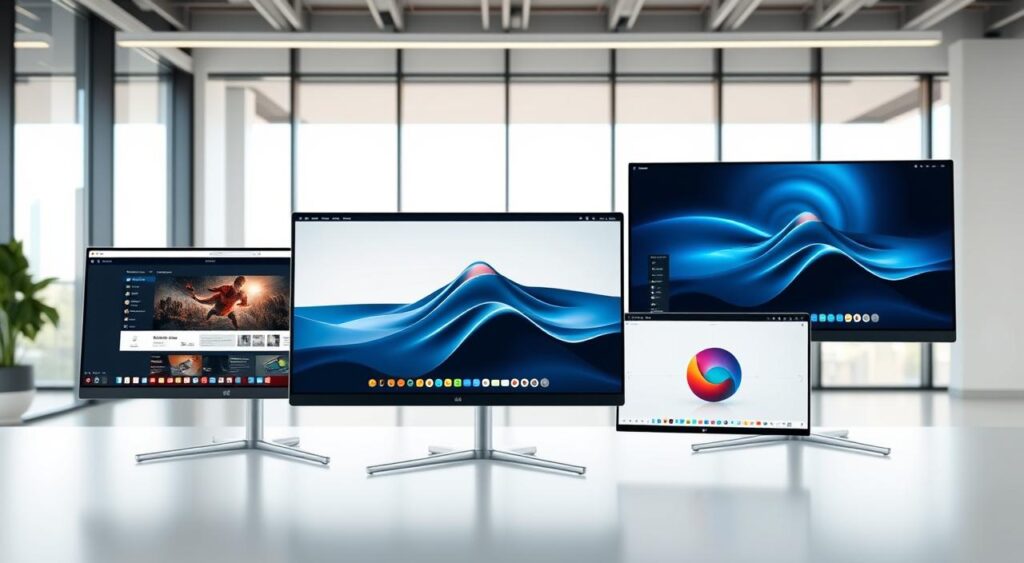
The right AI image creator for you depends on your needs. Look at each platform’s features and benefits. This way, you can pick the best ai image maker for your project.
Getting Started with AI Image Generation
Starting with AI image generation might seem hard, but it’s actually easy once you know how. CNET says you just need to learn some basic commands and prompts. With machine learning, you can make high-quality images in just minutes. This is much faster than making them by hand.
To start, you need to know the basic commands and prompts for image manipulation ai. This means making detailed prompts that help the AI make better images. You can also try different styles like photorealistic, oil painting, and watercolor to see what works best for you.
- Use high-resolution images for professional projects
- Experiment with various descriptions to refine your desired images
- Modify and upscale AI-generated images to suit specific display requirements
By following these tips and using machine learning image generation and image manipulation ai, you can make amazing visuals that fit your needs.
| AI Image Generation Benefits | Description |
|---|---|
| Time Savings | Creates high-quality images in minutes |
| Cost Savings | Can save businesses up to 50% in design-related costs |
| Scalability | Can produce thousands of images rapidly |
Advanced Techniques for AI Image Creation
Once you’ve learned the basics of AI image generation, it’s time to dive into advanced techniques. With an ai image generator, you can try out various styles and effects. This can lead to unique and stunning visuals. According to Tom’s Guide, advanced techniques include using multiple models and fine-tuning parameters.
Understanding how to use different models and techniques is key. For example, Generative Adversarial Networks (GANs) are behind more than 50% of today’s image generation. StyleGAN2 also helps by improving model generalization, especially when data is scarce. This can cut training time by up to 30%. By using these methods, you can make high-quality images with an artificial intelligence image creator.
Some advanced techniques for AI image creation include:
- Using multiple models to generate images
- Fine-tuning parameters to achieve specific effects
- Experimenting with different styles and effects
By applying these techniques, you can unlock the full potential of your ai image generator. This will help you create stunning visuals that show off your creativity.
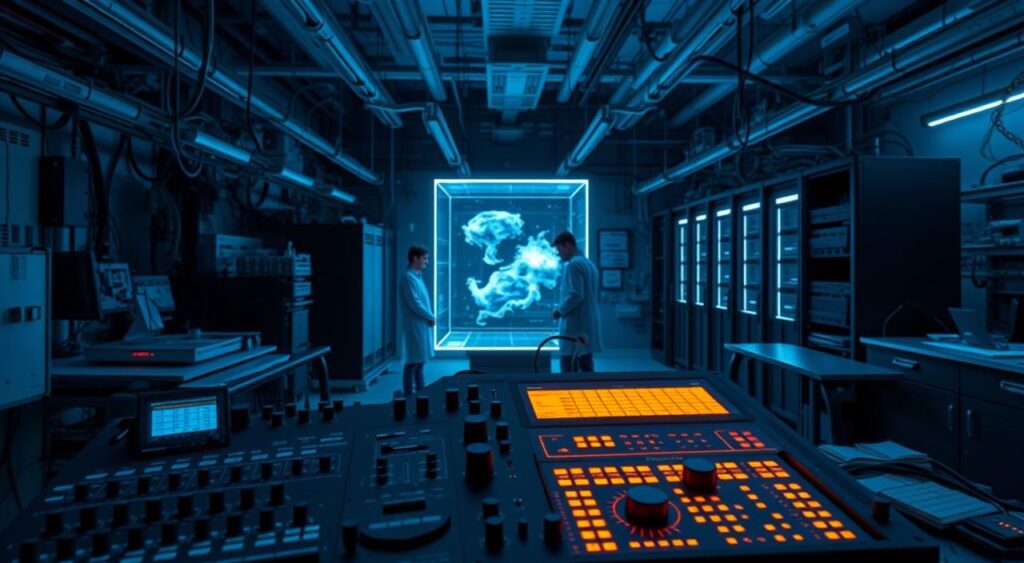
Cost Considerations and Pricing Models
When picking an ai picture generator, cost and pricing are key. CNET notes that prices vary among AI image generator platforms. Prices can be a few dollars or tens of thousands, based on needs.
Some offer free options, while others need subscriptions or pay-per-use. For example, DALL·E 3 costs $20 monthly for ChatGPT Plus, with 40 messages every three hours. Midjourney’s Basic Plan is $10 monthly, giving about 3.3 hours of GPU time for 200 images.
Here are important points to think about when looking at AI image generator costs:
- Cost per image or prompt
- Subscription plans and pricing tiers
- Pay-per-use models and their costs
- Any extra fees for hardware, software, or training data
Knowing the pricing models and costs helps you pick the right ai picture generator. This way, you can enjoy automated image generation within your budget.
Legal and Ethical Considerations
When you use ai driven image tool and neural network image generator, think about the legal and ethical sides. Tom’s Guide says there are big issues like copyright and who owns the work. AI could also replace human jobs, affecting employment for creatives. There’s a big worry about copyright infringement and plagiarism because AI trains on big datasets without permission.
In the U.S., the Copyright Office says AI works can’t get copyright unless a human did a lot of work on them. Experts want clearer rules for AI art and fair data use. Some groups want AI developers to follow ethical codes. To use these tools right, remember:
- Know the rules and rights for the ai driven image tool and neural network image generator you pick.
- Watch out for biases in the training data and try to fix them.
- Think about how AI content might affect human creatives and jobs.
By keeping these legal and ethical points in mind, you can use ai driven image tool and neural network image generator well. This way, you support good innovation and creativity.
Creative Applications and Use Cases
Computer generated images are changing how we do creative projects. Automated image generation tools lead this change. They can make high-quality, realistic images in seconds. This is useful for marketing, advertising, personal projects, and professional design.
Using these tools can make projects faster, cheaper, and more creative. Businesses can make custom product images and social media graphics quickly. This helps keep a brand’s look the same everywhere, which is key for big companies.
Some popular uses for these tools include:
- Marketing and advertising: making custom product images and social media graphics
- Personal projects: creating artwork and custom phone cases
- Professional design work: improving projects like architecture, interior design, and graphic design
Automated image generation tools are creating new chances for creative people and businesses. They’re driving innovation in many fields.
Limitations and Challenges of Current AI Image Generators
Exploring image synthesis software and deep learning image generators shows their limits and challenges. Tom’s Guide notes that these tools face issues like biases and limitations. For example, AI generators have made mistakes, like showing Nazi soldiers as black and Asian, and US Founding Fathers with a black man.
Some major challenges for AI image generators include:
- Potential biases and limitations in the training data
- Difficulty in accurately depicting human features, leading to anomalies such as misplaced fingernails and unnaturally elongated teeth
- Struggles to understand the practical uses of everyday tools, resulting in erroneous representations of objects
Moreover, deep learning image generators can spread misinformation, especially on social media. This is because realistic images, known as ‘deepfakes’, can be used to spread false information. To tackle these issues, it’s vital to keep improving these tools. They need to be trained on diverse and accurate data sets.
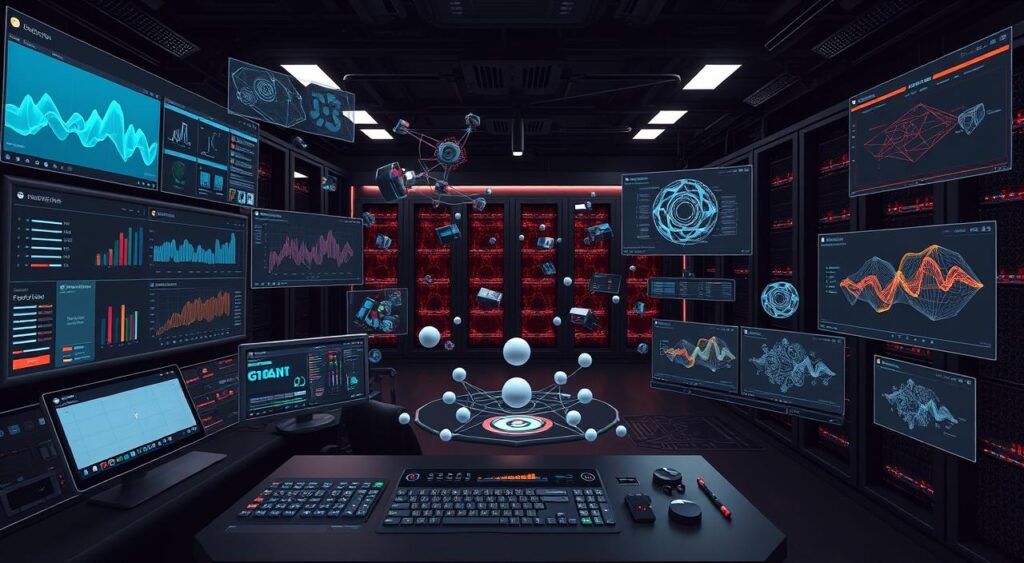
Knowing the limits and challenges of AI image generators helps you use them wisely. This way, you can make smart choices about their role in your projects.
| Challenge | Description |
|---|---|
| Potential biases and limitations | AI image generators can perpetuate biases and limitations present in the training data |
| Difficulty in accurately depicting human features | AI image generators can struggle to accurately depict human features, leading to anomalies |
Tips for Optimizing Your AI-Generated Images
Using a neural network image creator or computer vision image generator can greatly improve your AI-generated images. CNET says that to do this, you need to work on your prompts, refine the style, and use post-processing techniques. First, learn about prompt engineering. This means making clear and specific prompts for the AI image generator.
A good prompt can really change how your image looks. For example, using detailed language and telling the AI what style you want can help a lot. Also, trying out different prompts and tweaking your language can make your images better, sometimes by 50%.
Here are some tips to improve your AI-generated images:
- Use clear and concise language in your prompts
- Specify the desired style or theme
- Experiment with different prompt variations
- Refine the language used in your prompts
By following these tips and using a neural network image creator or computer vision image generator, you can create high-quality AI-generated images that meet your needs and expectations.
It’s also important to know what the AI model can and can’t do. By using the model’s strengths and working within its limits, you can get better results. With time and effort, you can get really good at making the most of your AI image creator or generator.
| Prompt Engineering Techniques | Benefits |
|---|---|
| Clear and concise language | Improved output quality |
| Specific style or theme specification | More accurate and relevant results |
| Prompt variation and refinement | Up to 50% improvement in image quality |
Integration with Other Creative Tools
Exploring machine learning image generation, you might ask how it fits with other creative tools. Tom’s Guide says combining AI image creators with creative tools boosts productivity and creativity. This makes it easier for artists and designers to create amazing visuals.
Using image manipulation ai is key in this mix. It lets you enhance and change images in many ways. By merging machine learning image generation with other tools, you open up new creative doors. For instance, you can start with AI images and then edit them in graphic design software.
Some top tools that work well with machine learning image generation include:
- Graphic design software, such as Adobe Photoshop
- Video editing software, such as Adobe Premiere Pro
- 3D modeling and animation software, such as Blender
These combinations help you make complex, stunning projects. This can be anything from ads to short films, all thanks to machine learning and image manipulation ai.
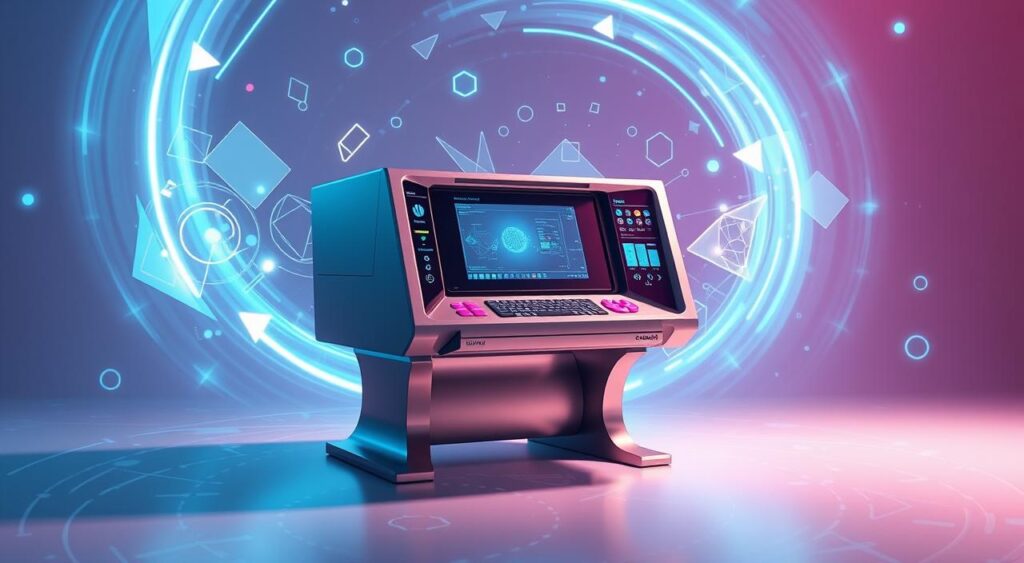
By using machine learning image generation with other creative tools, you can reach new heights of creativity and productivity. This keeps you at the forefront of digital art and design’s fast-changing world.
Future Developments in AI Image Generation
The future of AI image generation is exciting and fast-paced. New technologies and improvements are on the way. CNET says we can expect new features and better performance. The market for AI image generators is growing quickly, expected to reach $917.4 million by 2030.
AI image creators will soon work better with other creative tools. This means users can make high-quality images fast and easy. Since 2022, over 15 billion AI images have been made, with 34 million new ones every day.
AI image generators offer many benefits. They save money, work fast, and keep images consistent. Brands can use them to make their marketing look better. Companies like ASOS are already using AI to make product images look real.
Soon, AI will make images that look incredibly real. It will also add augmented reality to image making. More businesses and people will use AI to make great images. As AI gets better, its images will look almost as good as real photos.
Future AI image creators will have cool features. They will be interactive, transfer styles, and improve images. These tools will be easier to use and more affordable.
| Feature | Description |
|---|---|
| Interactivity | Enable users to interact with generated images in real-time |
| Style Transfer Technology | Allow users to transfer styles from one image to another |
| Super-Resolution Techniques | Enable users to generate high-resolution images from low-resolution inputs |
Making the Right Choice for Your Needs
Choosing the right ai picture generator involves looking at several things. These include the image quality, how easy it is to use, and how much you can customize it. With many tools out there, picking the right one is key. Tom’s Guide says it’s important to think about image quality, user interface, and customization options.
Tools like Midjourney, Stable Diffusion, and DALL-E 2 are popular for different reasons. Midjourney is great for artistic and imaginative pictures. Stable Diffusion offers a lot of control and customization. Think about what you need and what features are most important to you when picking a tool.
Here are some key factors to consider when selecting an ai picture generator:
- Image quality and resolution
- User interface and ease of use
- Customization options and features
- Pricing and budget
By looking at these factors and trying out different tools, you can make a smart choice. This way, you can find the best ai picture generator for your needs.
Conclusion
The best AI-driven image tool for you depends on what you need and want. Think about what you want to achieve and what you need from the tool. This guide has given you the tools to make a smart choice and unlock your creativity.
Keep an eye on new advancements in AI image making. Don’t hesitate to try out new tools and techniques. With AI, you can create amazing art and digital content without limits.
Let these advanced technologies change how you create. Let your imagination run wild.
FAQ
What is an AI image generator?
An AI image generator is a tool that uses artificial intelligence to create images from text. It analyzes the text and makes images that match the description.
How do AI image generators work?
AI image generators use neural networks to create images from text prompts. This technology has grown a lot in recent years.
What are the benefits of using AI image generators?
AI image generators change the digital art world. They help artists and designers make amazing visuals easily. They also make creating images fast and high-quality.
What key features should I look for in an AI image generator?
Look for good image quality, resolution, and an easy-to-use interface. Also, consider customization options and output formats.
How do I select the best AI image generator for my needs?
Compare different AI image generators. Look at their strengths, weaknesses, and features. Choose the one that fits your needs best.
How do I get started with AI image generation?
Start by learning basic commands and prompts. Understand how to control styles and follow tips for better results.
What are some advanced techniques for creating stunning AI-generated images?
Try using multiple models and fine-tuning parameters. Experiment with different styles and effects to improve your images.
What are the cost and pricing models for AI image creators?
AI image creators have various pricing models. You can find free, paid, subscription, or pay-per-use options. Pick the one that suits your budget and needs.
What are the legal and ethical considerations when using AI image generators?
Think about legal and ethical issues like copyright and ownership. Use these tools responsibly and with respect for others’ work.
What are the current limitations and challenges of AI image generators?
AI image generators have made big strides but still face challenges. These include biases and technical limits. Knowing these can help you work around them.
How can I optimize my AI-generated images?
Improve your images by refining prompts, styles, and using post-processing techniques. This will help you get the results you want.
How can I integrate AI image creators with other creative tools?
Using AI image creators with graphic design and video editing software can boost your productivity and creativity.
What’s the future of AI image generation?
The future of AI image generation looks bright. New technologies and improvements in AI, computer vision, and machine learning are expected.

